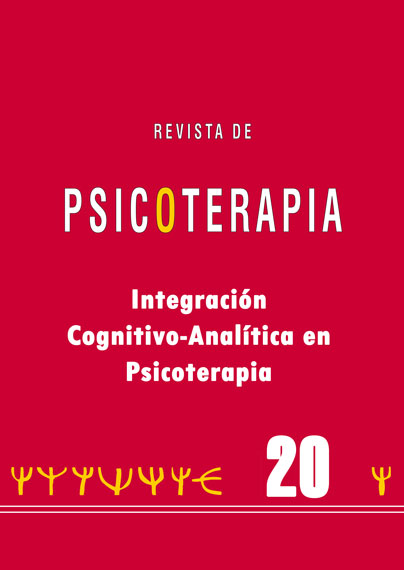El efecto integrador de la reformulacion: psicoterapia cognitivo-analitica en un paciente con un trastorno borderline de la personalidad.
DOI:
https://doi.org/10.33898/rdp.v5i20.1071Palabras clave:
estudio de caso de trastorno borderline dela personalidad, método kleiniano, psicoterapia cognitivo analítica, reformulación, descripción verbal, diagramasResumen
Se presenta el impacto de 26 sesiones de Psicoterapia Cognitivo Analítica en una paciente borderline a través de los informes dados por el paciente en las entrevistas de valoración durante el seguimiento. Se sugieren una gran cantidad de cuestiones de interés práctico y teórico.
Descargas
Descargas
Publicado
1994-11-01
Cómo citar
Ryle, A., & Beard, H. (1994). El efecto integrador de la reformulacion: psicoterapia cognitivo-analitica en un paciente con un trastorno borderline de la personalidad. Revista De Psicoterapia, 5(20), 57–68. https://doi.org/10.33898/rdp.v5i20.1071
Número
Sección
Artículo de monográfico








